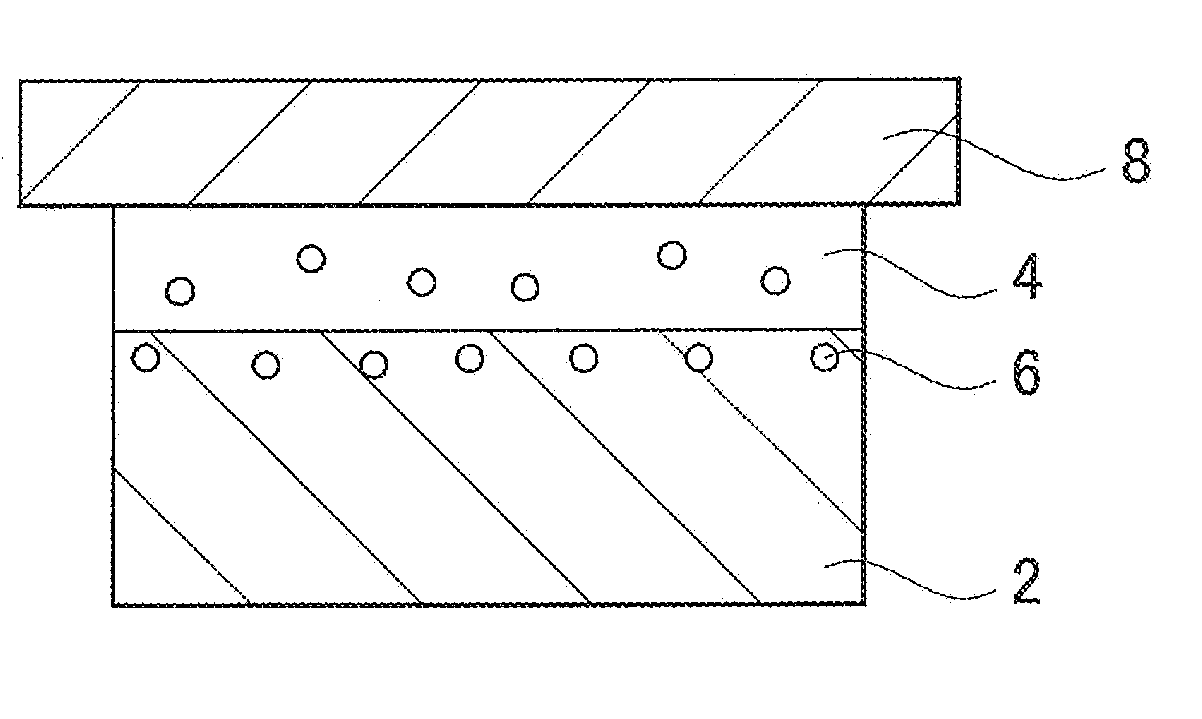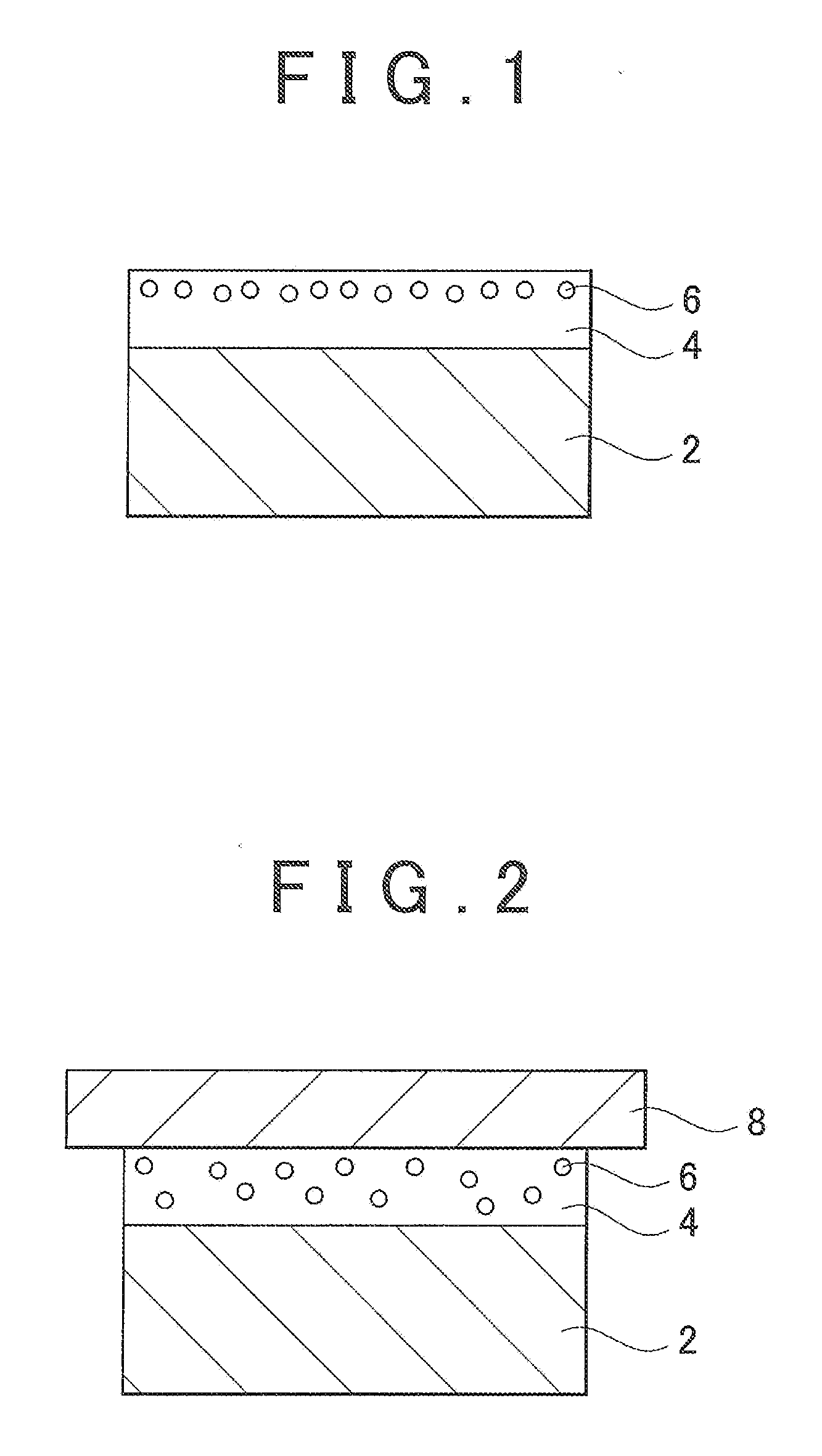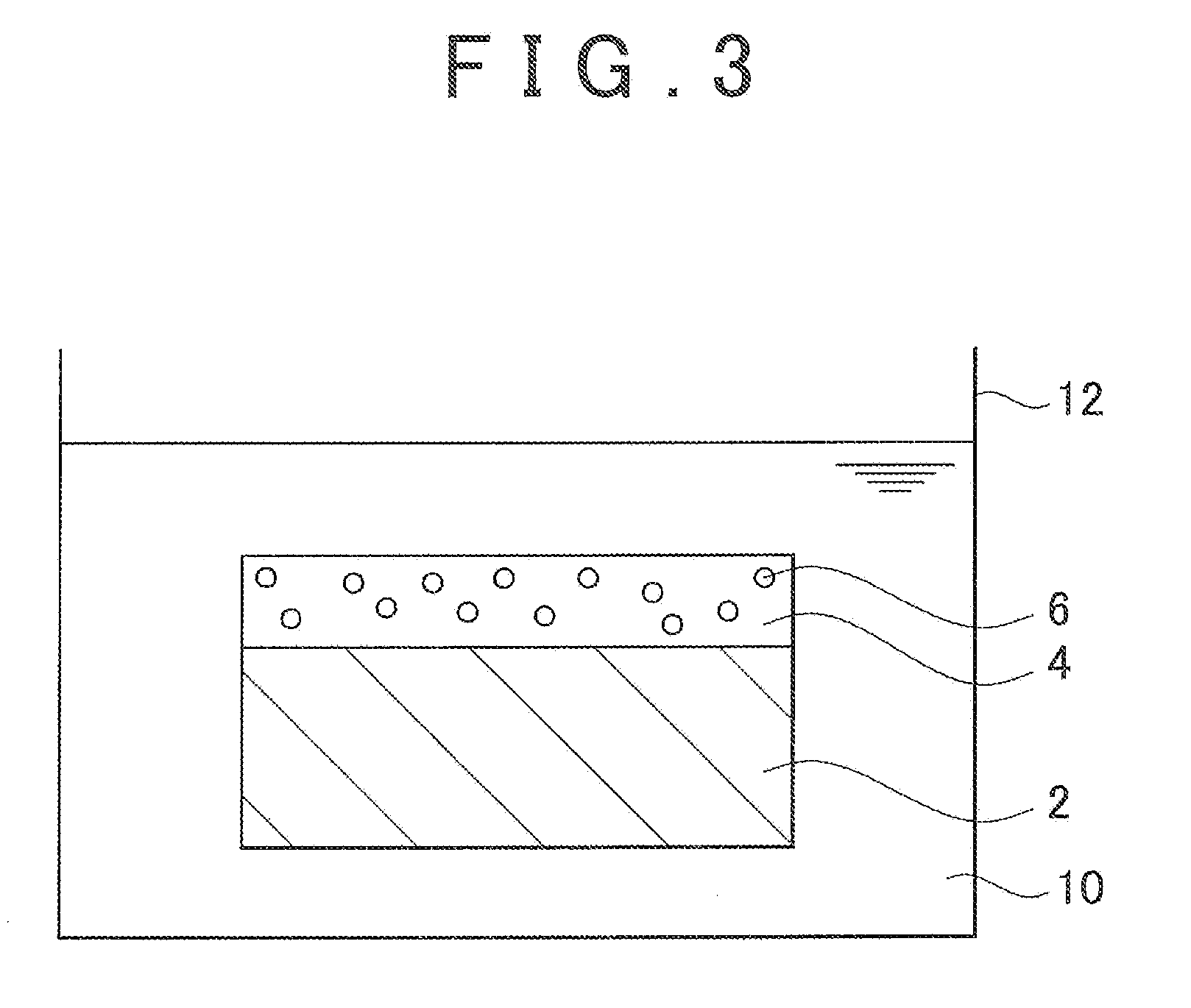Method of treating surface of mold
- Summary
- Abstract
- Description
- Claims
- Application Information
AI Technical Summary
Benefits of technology
Problems solved by technology
Method used
Image
Examples
Example
Technical features of an embodiment of the present invention are described below. The supply of a fullerene into the amorphous carbon layer that covers a surface of the mold can be achieved by applying a liquid that contains a fullerene to a surface of the amorphous carbon layer. By applying a liquid that contains a fullerene to a surface of the amorphous carbon layer, the fullerene can be uniformly supplied into the amorphous carbon layer. The liquid in which a fullerene is dispersed is preferably selected from alcohols. Because a fullerene can be easily dispersed in an alcohol, a liquid that contains a fullerene can be easily prepared. Also, after the application of the liquid to the amorphous carbon layer, the alcohol vaporizes so that only the fullerene remains in the amorphous carbon layer. Thus, there is no need to wipe off the alcohol.
The mold may be made of SKD61 (hot-die steel) that is specified in JIS. One example of the mold is a casting mold for use in the production of ...
PUM
| Property | Measurement | Unit |
|---|---|---|
| Temperature | aaaaa | aaaaa |
| Temperature | aaaaa | aaaaa |
| Melting point | aaaaa | aaaaa |
Abstract
Description
Claims
Application Information
 Login to View More
Login to View More - R&D
- Intellectual Property
- Life Sciences
- Materials
- Tech Scout
- Unparalleled Data Quality
- Higher Quality Content
- 60% Fewer Hallucinations
Browse by: Latest US Patents, China's latest patents, Technical Efficacy Thesaurus, Application Domain, Technology Topic, Popular Technical Reports.
© 2025 PatSnap. All rights reserved.Legal|Privacy policy|Modern Slavery Act Transparency Statement|Sitemap|About US| Contact US: help@patsnap.com



